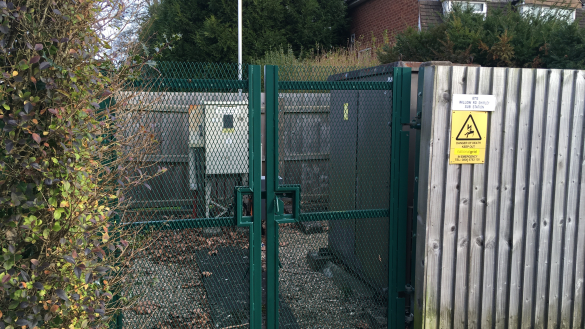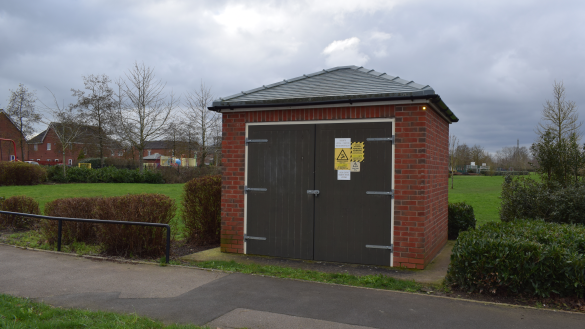Final distribution substations
Final distribution substations are the last substation that electricity will pass through before it reaches our homes. They transform electricity from high voltage to 230 Volts to be used in the home. They are usually located very close to where the electricity will be used, sometimes sharing a boundary wall with a house or being part of a larger building. This type of substation can have up to a few hundred properties connected to it but in very rural locations there may be only one or two connections. Electrical equipment may not always be visible from outside – they can range from small pole mounted units, to self-contained boxes, brick buildings similar in size to a garden shed, or larger buildings similar to a domestic garage.
Final distribution substations always comply with the public EMF exposure guidelines.
Electric fields
Electric fields are very easily shielded and any final distribution substation within a building or surrounded by a fence will have the electric field mostly contained within the perimeter. For pole mounted transformers there will be an electric field, but the electric field from the overhead line will be larger, making the field from the transformer negligible.
Magnetic fields
Equipment inside a substation produces magnetic fields due to the current flowing through it. The equipment is usually compact and the magnetic field reduces rapidly as you move away from it. Usually, the field at the substation boundary fence or building may be slightly elevated above background level, typically 1 - 2 microteslas (μT). This reduces with distance to below background level, typically within 1 - 2 metres from the boundary or wall of the substation. The background level is between 0.01 and 0.2 μT.


